The Royal Delft factory is the only remaining Delft Blue factory in Delft where Delft Blue pottery is still produced by hand. The Royal Delft Factory Museum reopened in 2022 after an extensive renovation, and I took the opportunity to check if it was worth a visit.
The Royal Delft Factory museum is worth a visit because it is a unique combination of a Delft Blue Pottery museum and the only remaining Delft Blue factory in Delft where the Delft Blue pottery is still produced by hand.
You can see how Delft Blue pottery is produced in the Royal Delft Blue factory, making the Royal Delft Blue Factory museum a unique Delft Blue museum.
Read on to find out how to get to this museum and what it has to offer to its visitors.
How To Get To The Royal Delft Blue Factory Museum?
The Royal Delft Blue Factory Museum is located slightly below the historic center of Delft. It is about a 20-minute walk from the center of Delft (Markt), partly through the beautiful historic center of Delft, to get to the Royal Delft Blue Factory Museum.
The Royal Delft Blue Factory Museum is not easy to reach by public transportation. You can get close by bus line 69 from Delft Central Station, but you still have to walk 5-10 minutes to get to the museum.
Royal Delft Blue Factory Museum Parking
The Royal Delft Blue Factory Museum is easily accessible by car, though, and there is free parking next to the museum.
If that parking place is full, there is parking across the street, but that is paid parking.
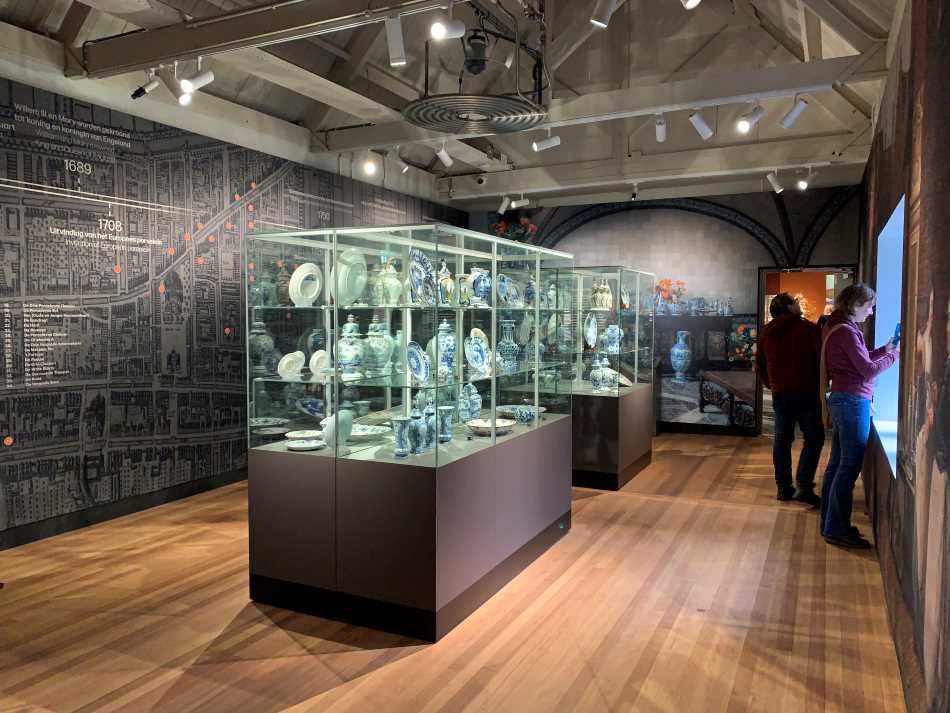
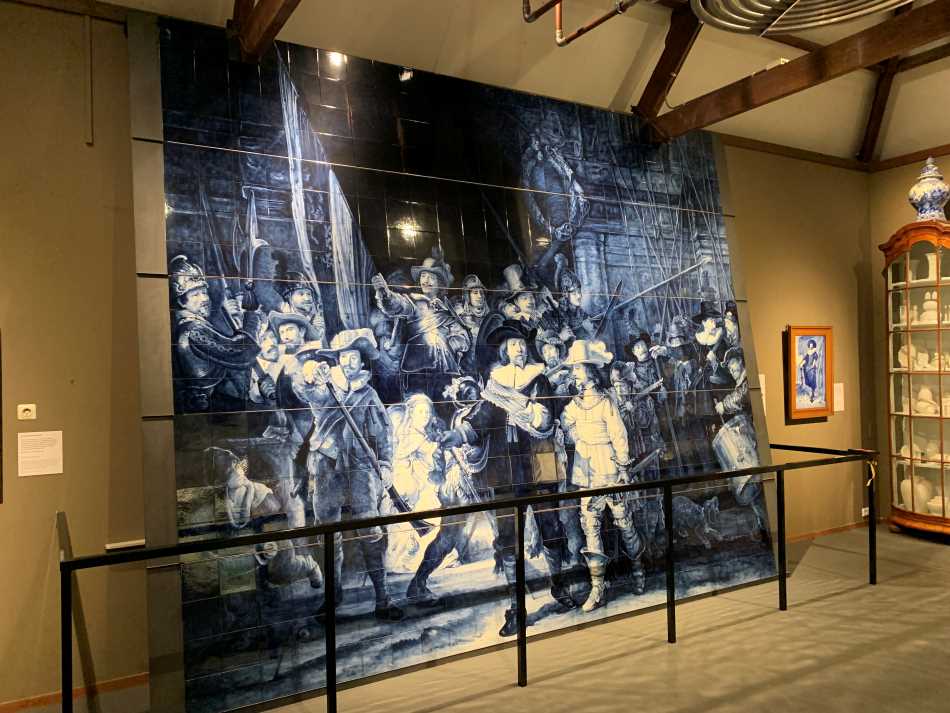
What Does The Royal Delft Blue Factory Museum Offer?
Since 1916, the Royal Delft Factory Museum has been located in a beautiful historic building below the center of Delft. However, the Royal Delft pottery factory had existed since 1653 when Jan van der Pieth founded it under the name De Porceleyne Fles (The Porcelain Bottle).
Production has been scaled down considerably since 1916, making room for a museum that attracts tens of thousands of visitors annually. However, manual production of Delft Blue pottery still occurs in a part of this building.
This makes the Royal Delft Blue factory the only remaining Delft Blue pottery factory in Delft, where Delft Blue is still produced entirely by hand. This is unique and makes the Royal Delft Museum an extraordinary museum, half museum and half factory.
The halls in the museum are filled with exquisite Delft pottery, from small to large. However, the largest and most impressive piece is the copy of the Night Watch, painted at full size (see above).
The museum pays much attention to the history of Delft Blue pottery and its production through the ages. In addition, the museum has a pretty good free audio tour that answers many questions about the cultural-historical significance of Delftware.
I have collected much of this information in another article on this website to answer the 10 most common questions about Delft Blue Pottery.
The factory part of the museum is fantastic to see. At each part of the production process, monitors explain briefly what happens there and why that is important in the production of Delft Blue pottery.
The highlight of the factory part is that you can look over the shoulder of one or more painters who manually paint the pottery products. I met an incredibly friendly painter who clearly enjoyed his job and was willing to explain his work.
It is a monk-like job, though, because painting a vase like the one below takes him about four hours of precise painting. When you realize that, you understand why hand-produced Delft Blue is more expensive than mass-produced white and blue pottery from China.
Of course, the tour through the museum and factory ends in a store where you can buy lovely Delft Blue pottery. There is also an intimate brasserie next to the museum shop, aptly named 1653, where you can have a drink and chat about your visit to this intriguing museum.
The Royal Delft Blue Factory museum is not large; you have seen everything worthwhile in a few hours. I advise walking back to the historic center of Delft if the weather is somewhat reasonable.
That is a lovely walk where you can still see what makes Delft such a charming city and also visit other attractions in the historic center of Delft.
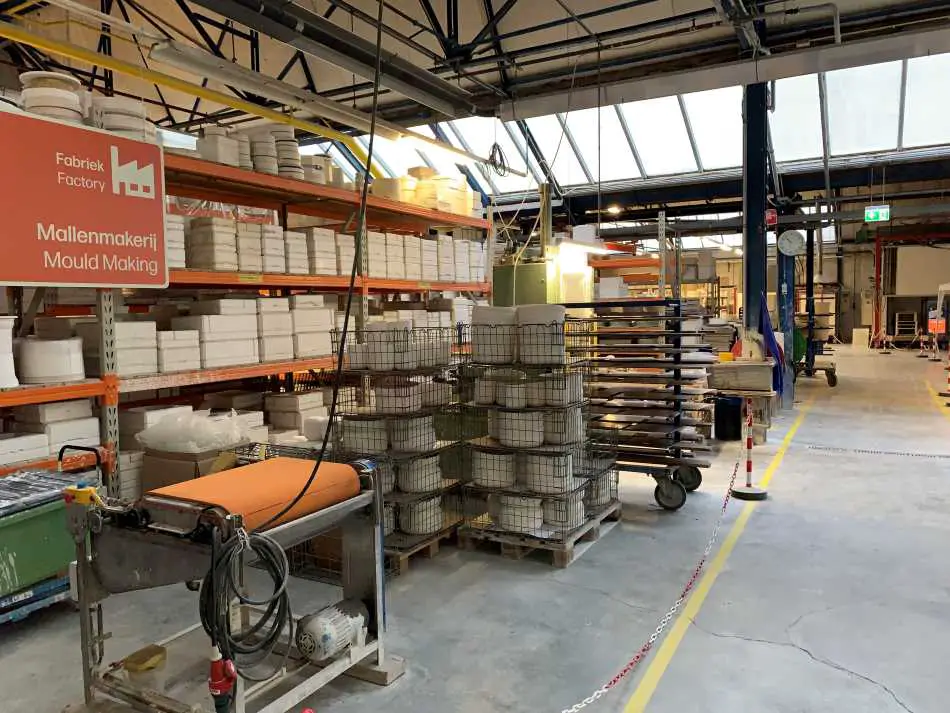
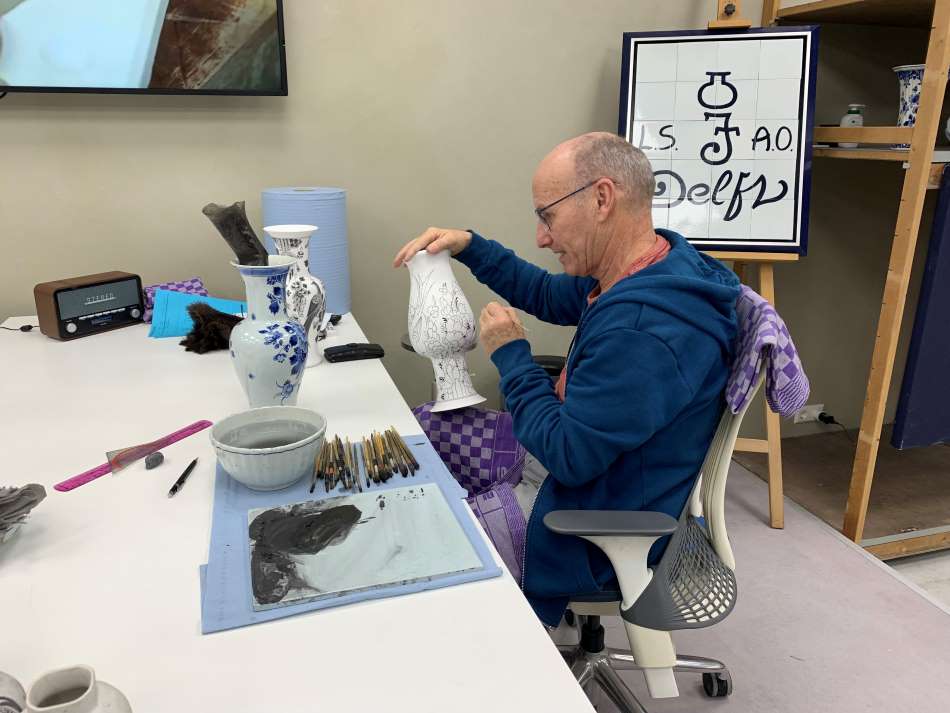
What Is The Mark Of The Royal Delft Factory?
Delft potters painted marks on the back or bottom of their products to distinguish “true Delft Blue” from white and blue pottery produced elsewhere.
The Royal Delft factory’s current mark is below.
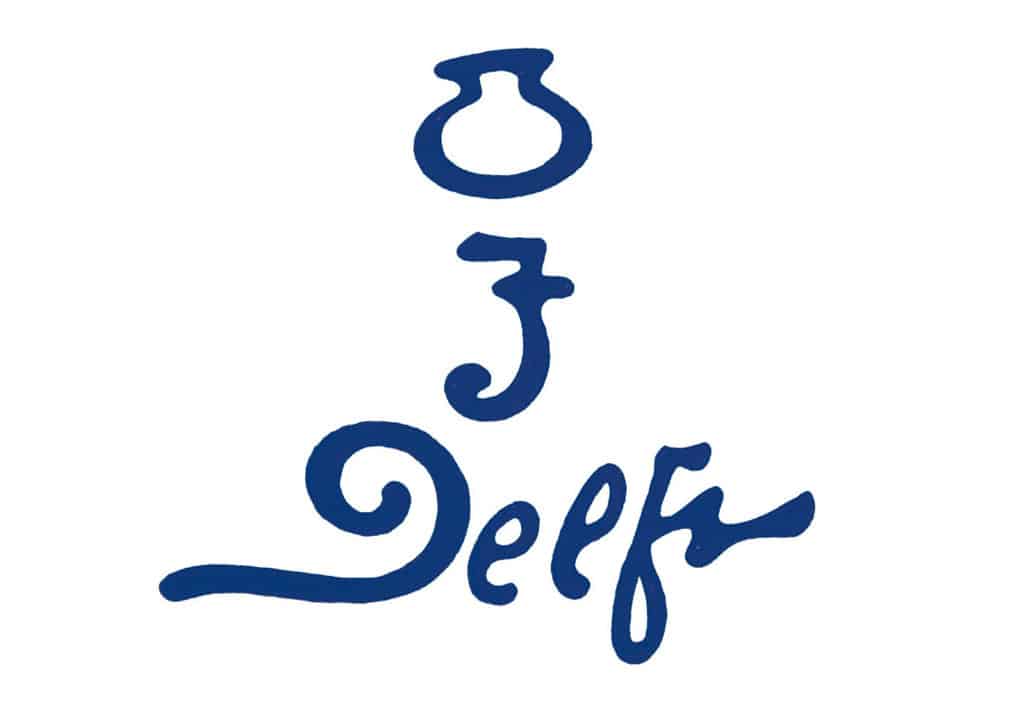
The bottle at the top refers to Royal Delft’s original name, The Porceleyne Fles.
The mark in the middle combines the initials J.T. of Joost Thooft; owner of the Delft Blue factory in the 19th century.
Below that is the word Delft.
Often, to the left and right of this mark are the initials of the potter and the year the pottery was produced.
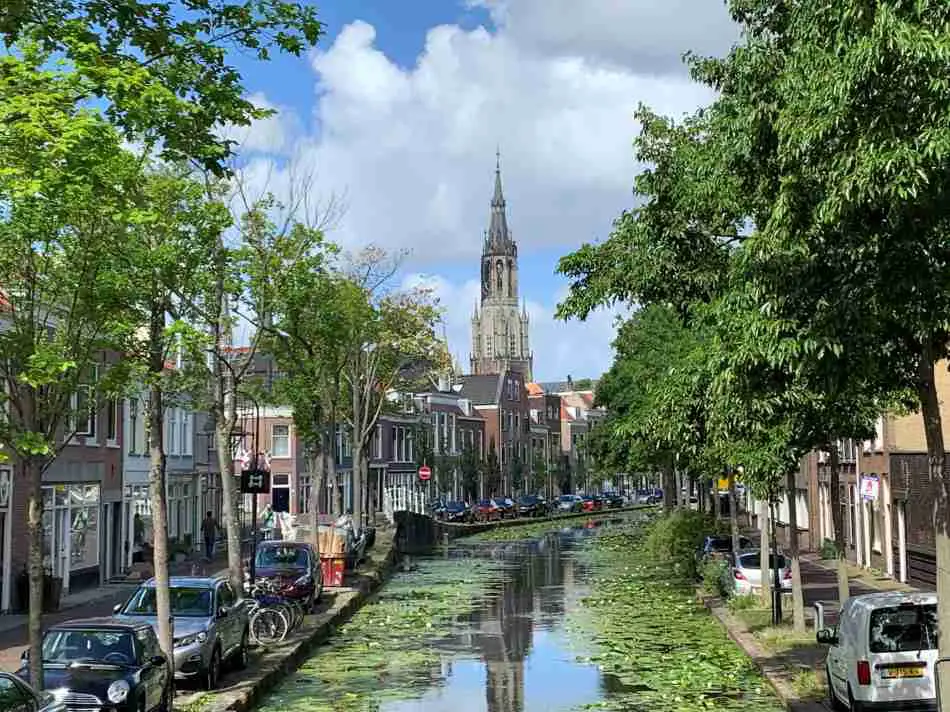
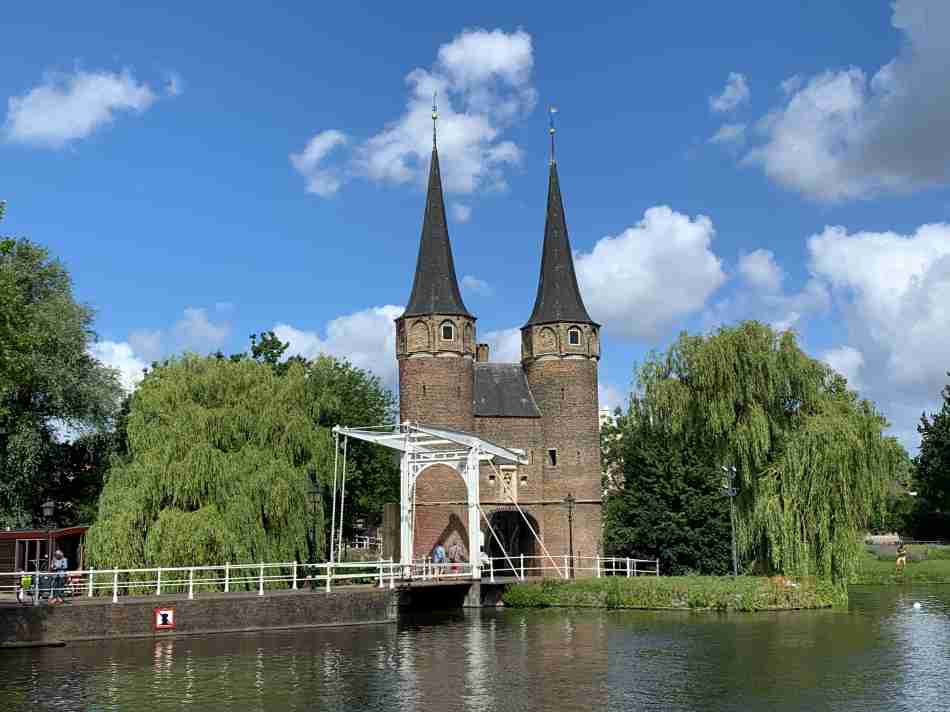
Other Tourist Attractions in Delft
Delft is where one of Holland’s most famous painters, Johannes Vermeer, lived and worked his entire life. They are pretty proud of that in Delft. Vermeer lived from 1632-1675 and may have used Delft Blue tableware from the Porceleyne Fles.
If you would like to know more about Vermeer, you might also be interested in another article on this website in which I described why Johannes Vermeer became so famous.
I can recommend visiting the Vermeer Center in the center of Delft. Together with the Prinsenhof Museum (300 meters away), these are the most beautiful museums in Delft, and I highly recommend them.
I have described these museums in more detail in another article about the 30 most beautiful museums in the Netherlands.
Frequently Asked Questions
Opening Hours of Royal Delft Blue Factory Museum
The Royal Delft Blue Factory Museum’s opening hours are in the table below.
| Day | Opening hours |
|---|---|
| Monday | 10:00 17:00 hrs. |
| Tuesday | 10:00 17:00 hrs. |
| Wednesday | 10:00 17:00 hrs. |
| Thursday | 10:00 17:00 hrs. |
| Friday | 10:00 17:00 hrs. |
| Saturday | 10:00 17:00 hrs. |
| Sunday | 10:00 17:00 hrs. |
Be sure to check the Royal Delft Blue Factory website to see if there isn’t a special occasion or reason they might be closed. It would be a
